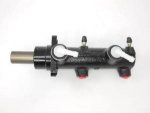Gifu
New member
- 7
- 0
- 1
- Location
- Truckee CA
new to me FLU419; pretty rough shape.
in trying to diagnose my zero brake issue through searches here, I soon realized my air system is at zero psi.
Sounds like the engine (cam?) driven compressor runs all the time.
Then a system of relief valves and regulators keep the system around 100 psi.
Systems include: brakes, 4x4, transmission, lockers, trailer brakes, tire inflation?...
So... where do I start?
Do the compressors ever go... bad?
Should I delete some of the extra systems that will never be used? ie: trailer brakes, alcohol injection (it does it get to about 0*F, but rarely much lower)
in trying to diagnose my zero brake issue through searches here, I soon realized my air system is at zero psi.
Sounds like the engine (cam?) driven compressor runs all the time.
Then a system of relief valves and regulators keep the system around 100 psi.
Systems include: brakes, 4x4, transmission, lockers, trailer brakes, tire inflation?...
So... where do I start?
Do the compressors ever go... bad?
Should I delete some of the extra systems that will never be used? ie: trailer brakes, alcohol injection (it does it get to about 0*F, but rarely much lower)



